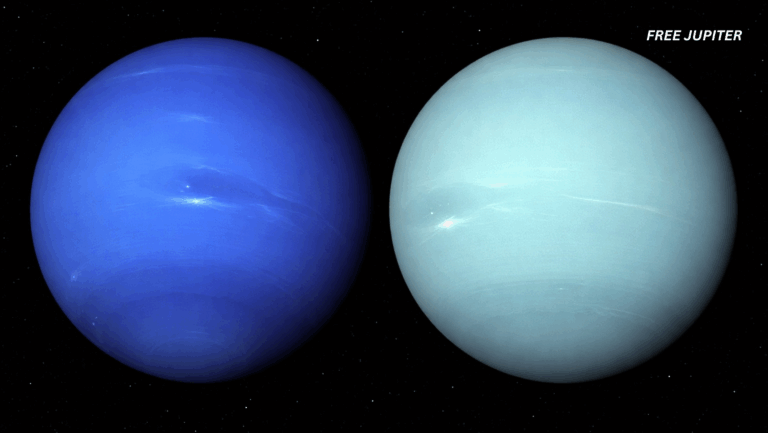Friendly Note: FreeJupiter.com is a place for curious minds and fun discoveries 🌌✨ But we’re a general information site, not a medical guide. Always double-check the facts—and when it comes to your health, check in with a professional too! 💙
Let’s imagine you’ve been sticking to your exercise plan, choosing the salad over the burger, and finally, the number on the scale has started to go down. Naturally, you feel proud—but have you ever stopped to wonder where that fat actually goes?
Most people assume the fat “burns off” as heat, melts into sweat, or somehow flushes out of your system. Others think it magically turns into muscle or disappears into the air. Surprisingly, the truth is stranger (and more fascinating) than all of these guesses: you literally breathe most of it out.
Yep, that muffin top you’re trying to lose? It leaves your body through your nose and mouth.
The Great Fat Exit: Science Explains
According to a study published in the British Medical Journal, when you lose body fat, about 84% of it turns into carbon dioxide (CO₂), which exits your body when you exhale. The remaining 16% becomes water, which leaves your body via urine, sweat, tears, and even saliva.
This means when you shed 10 kilograms (about 22 pounds) of fat, roughly 8.4 kilograms go out with every breath you take, and the other 1.6 kilograms exit through fluids.
Let that sink in: you exhale fat.
This fact is so unexpected that researchers found 98% of health professionals they surveyed got it wrong. Most thought fat was converted into energy or heat, or assumed it left through bodily waste. Others believed it transformed into muscle—which, by the way, is not physically possible. Fat and muscle are made of different cells and serve entirely different functions.
A Bit of Chemistry (Don’t Worry—No Quiz After)
To understand this phenomenon, we need to dip (gently!) into some basic chemistry. Fat molecules are made up primarily of three elements: carbon, hydrogen, and oxygen. When you lose fat, your body doesn’t make it disappear into thin air—it breaks it down in a process called oxidation.
Let’s say you’re burning triglycerides (a common type of fat stored in your body). The chemical reaction looks like this:
C₅₅H₁₀₄O₆ + 78O₂ → 55CO₂ + 52H₂O + Energy
This means your body takes one fat molecule and 78 molecules of oxygen (from the air you breathe) and turns them into 55 carbon dioxide molecules, 52 water molecules, and some energy for your body to use.
So, while you go about your day—walking, cooking, talking, even sleeping—your body is quietly using oxygen to break down fat. The CO₂ leaves with every breath, and the water is excreted in various ways.
Read more: Facing Your Phobias While Lucid Dreaming May Reduce Real-Life Fears, Scientists Say
The “Energy” Myth: Why You Can’t Just Turn Fat Into Energy
Many people assume fat is converted entirely into energy, like gas powering a car. But here’s the catch: mass can’t be destroyed, according to the law of conservation of mass. When your fat is broken down for fuel, it produces byproducts—carbon dioxide and water—that must go somewhere.
So while your body does extract energy from fat to power your muscles and brain, the actual mass of the fat doesn’t vanish. Most of it becomes carbon dioxide and gets exhaled.
This is why no matter how intense your gym workout is, you’re not “sweating out” your fat. You’re breathing it out.
Can I Just Breathe More to Lose Weight?
Nice try, but no. Breathing faster while lounging on the couch won’t trick your body into burning fat. That’s because breathing out carbon dioxide is only part of the equation. You need to burn energy to create that CO₂.
And how do you burn energy? By moving.
Any physical activity—be it walking the dog, dancing in your living room, doing household chores, or jogging—requires energy. As your muscles work, they use more oxygen and fuel. Your fat reserves are tapped into, broken down, and the resulting carbon dioxide exits your lungs with every breath.
Fun fact: even standing up doubles your metabolic rate compared to sitting still. A brisk 30-minute walk triples it, helping you breathe out more CO₂ and, in turn, more fat.
So, while you can’t “hyperventilate” your way to a slimmer waistline, you can increase your fat loss by simply staying active—even outside the gym.
It’s Not About Diet Fads—It’s Still Calories In vs. Calories Out
Forget the buzzwords like “detox,” “keto,” “fat-burning zone,” or “metabolic reset.” The biology remains the same: your body breaks down any kind of food—carbohydrates, fats, or proteins—into carbon dioxide and water. The exact ratio may vary, but the end result doesn’t change.
Whether you’re on a high-carb diet, low-fat plan, intermittent fasting regimen, or avoiding gluten like it’s radioactive, your body still does one thing: turn food into CO₂, water, and energy.
You lose weight when you take in less fuel (food) than your body needs, forcing it to draw from fat stores to make up the difference. The byproducts of this process—yes, carbon dioxide and water—are eliminated through breath and fluid loss.
Read more: Dung Beetles Are the First Insects Proven to Navigate Using the Milky Way
Let’s Do the Math (In a Fun Way)
Here’s a hypothetical example to make it crystal clear.
Imagine you want to lose 5 kilograms of body fat.
- 84% of that = 4.2 kg will be exhaled as carbon dioxide.
- 16% of that = 0.8 kg will leave as water.
So for every kilogram of fat you lose, you’re literally exhaling about 2.3 kg of carbon dioxide, accounting for all the oxygen used in the chemical reaction.
Your lungs are doing the heavy lifting (quite literally), but only because your muscles made the demand for energy. Without movement, there’s no trigger for fat breakdown.
Does Sleep Help You Lose Fat?
Interestingly, yes—but not in the way you think. Your body is always burning energy, even when you’re asleep. This is called your basal metabolic rate (BMR)—the amount of energy your body uses just to keep you alive: breathing, pumping blood, regulating temperature, etc.
So even when you’re snoozing, you’re still exhaling fat—just at a slower pace. That’s why rest is important in any weight-loss plan. It keeps your metabolism functioning efficiently and helps your body recover from daily activity.
So, What’s the Takeaway Here?
Losing weight isn’t about sweating buckets or starving yourself—it’s about understanding how your body works on a chemical level. Fat doesn’t evaporate, vanish into thin air, or turn into muscle. It’s converted into carbon dioxide and water, and then it leaves your body through your breath and fluids.
Every time you:
- Go for a jog,
- Clean your house,
- Dance in your kitchen,
- Climb the stairs,
- Or even just get out of bed,
…you’re nudging your body to use fat for energy. As it does, you exhale the leftovers. Literally.
The Invisible Weight Loss Partner: Your Lungs
Your lungs don’t get enough credit in the weight loss journey. They’re not just helping you survive—they’re helping you shed fat. In fact, they’re your body’s secret exit door for all the carbon atoms that used to be stored around your belly, hips, and thighs.
So the next time someone asks, “Where does fat go when you lose it?” you can confidently say:
“Mostly? I breathe it out.”
Then take a deep breath—and smile—knowing you’re doing a little fat-burning with every exhale.
Final Thought: Movement Is Magic, Not Myth
Despite all the gimmicks out there, weight loss is still a matter of basic biology. Move more, eat smart, and rest well. There’s no quick fix or breathing hack that beats that formula. But now you know the science behind it—and that’s a breath of fresh air, isn’t it?
Disclaimer: The information in this article is for general informational purposes only and is not medical advice. We are not doctors, and this website is run as a family hobby project. Always consult a qualified healthcare professional before making decisions about your health. Please fact-check any claims and use this content as a starting point, not a substitute for professional guidance.










